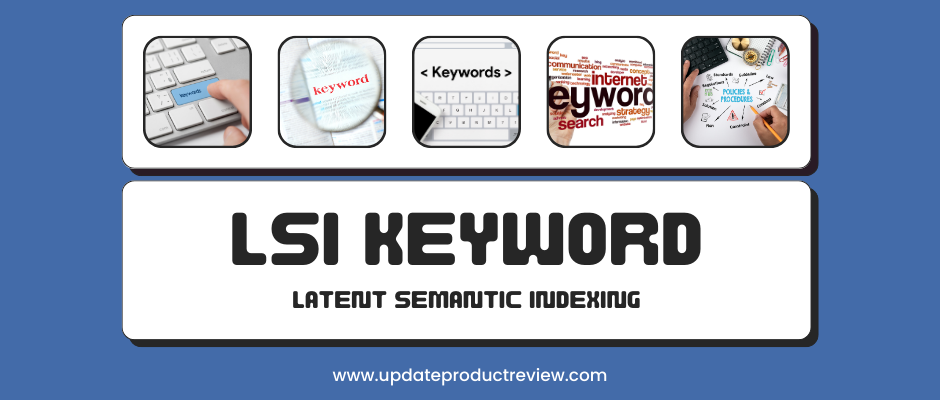Introduction to LSI Keywords: Unveiling Relevance
Latent Semantic Indexing (LSI) keywords play a crucial role in enhancing the relevance and comprehensiveness of your content, leading to better search engine rankings and improved user experience. In this comprehensive guide, we’ll delve into Mastering LSI Keywords for Enhanced Content Optimization, equipping you with the skills to incorporate them effectively into your SEO strategy and elevate your content to new heights.
At the heart of LSI keywords lies the principle of context. Search engines like Google have evolved to understand not only individual keywords but also the relationships between them.
LSI keywords are the semantically related terms that help search engines decipher the true meaning and context of your content. By using LSI keywords, you can create content that resonates with both search engines and your target audience.
The Importance of LSI Keywords in SEO
In the ever-evolving landscape of SEO, understanding and utilizing LSI keywords can give you a competitive edge. Here’s why they matter:
- Enhanced Relevance: LSI keywords ensure your content is relevant to a broader range of related terms, catering to various user queries.
- Improved Ranking Potential: By providing a comprehensive and contextually rich piece of content, you increase your chances of ranking higher in search results.
- Optimized User Experience: LSI keywords help create content that answers users’ questions and addresses their needs more effectively.
- Diverse Content Creation: Incorporating LSI keywords encourages you to cover different angles of a topic, resulting in well-rounded content.

Understanding the Concept of Semantic Search
To grasp the essence of LSI keywords, it’s essential to understand semantic search. Semantic search refers to the process by which search engines analyze the context, intent. And relationships between words to deliver more accurate and relevant search results. In other words, search engines are becoming more human-like in understanding user queries.
Identifying LSI Keywords: A Step-by-Step Guide
Identifying and incorporating LSI keywords might sound complex, but it’s a systematic process that can greatly benefit your content. Here’s how to do it:
- Start with Your Target Keyword: Begin with your primary keyword, the main topic of your content.
- Utilize Google’s “Searches Related to” Section: Scroll to the bottom of the search results page to find the “Searches related to” section. These are LSI keywords related to your main topic.
- Explore Google Autocomplete: As you type your main keyword into the search bar. Google’s autocomplete feature provides suggestions that often include LSI keywords.
- Use LSI Keyword Tools: There are several tools available that can help you discover LSI keywords. Such as LSIGraph and SEMrush’s Keyword Magic Tool.
Incorporating LSI Keywords into Your Content
Once you’ve identified relevant LSI keywords, it’s time to seamlessly integrate them into your content. Here’s how:

- Natural Integration: LSI keywords should flow naturally within your content. Avoid forced or excessive usage.
- Comprehensive Coverage: Use LSI keywords to address various aspects of the topic, providing a well-rounded and comprehensive resource for readers.
- Subheadings and Sections: Incorporate LSI keywords in subheadings and sections to structure your content effectively.
- Alternate Phrases: LSI keywords can be synonyms or alternative phrases that convey the same meaning. Use them to diversify your vocabulary.
Measuring the Impact of LSI Keywords
As with any SEO strategy, it’s crucial to measure the impact of your efforts. While there’s no direct tool to measure the influence of LSI keywords. You can gauge their effectiveness by monitoring the following:
- Improved User Engagement: Are users spending more time on your page, indicating that the content is relevant and valuable?
- Lower Bounce Rate: A decrease in bounce rate suggests that visitors are finding. What they’re looking for and exploring your content further.
- Enhanced Rankings: Keep an eye on your search engine rankings for the main keyword and related LSI keywords.
Avoiding LSI Keyword Pitfalls
While LSI keywords can be immensely beneficial, there are a few pitfalls to watch out for:
- Keyword Stuffing: Just like with primary keywords, avoid overusing LSI keywords, as it can harm the quality of your content.
- Relevance is Key: Ensure that the LSI keywords you use are genuinely relevant to your content. Irrelevant keywords can confuse both readers and search engines.
- Straying from Intent: While incorporating LSI keywords, never lose sight of the primary intent of your content. LSI keywords should complement, not overshadow, your main topic.
Conclusion: Elevating Your Content with LSI Keywords
As we conclude this tutorial on Mastering LSI Keywords for Enhanced Content Optimization. you’ve gained insights into their pivotal role in modern SEO. By understanding semantic search, identifying relevant LSI keywords, and integrating them naturally into your content. You’re on your way to crafting more valuable and comprehensive pieces. Remember, LSI keywords are not a replacement for high-quality content. They are a tool that complements your content by providing context and relevance. As you continue to refine your SEO strategy, harness the power of LSI keywords to enhance user experience. It improves rankings, and stay ahead in the dynamic world of digital optimization.









